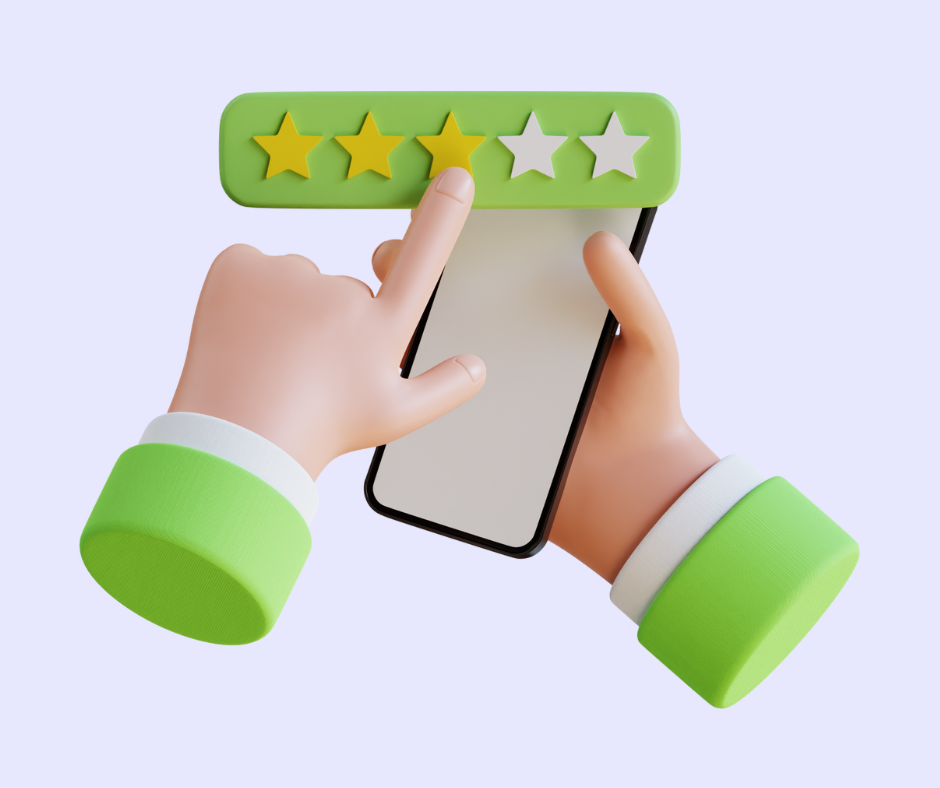Boost your revenue with these small business lead generation tips
Looking to grow your small business? Generating high-quality leads is essential for success. In this blog post, we'll share proven lead generation strategies and best practices for small business owners, covering everything from defining your target audience and crafting a compelling value proposition to leveraging social media and email marketing.
By following these tips, you can improve your sales and marketing efforts, drive growth and increase revenue. Whether you're just starting out or looking to take your small business to the next level, this guide is for you. So let's dive in and master the art of lead generation for small businesses.
Ready to generate leads for your small business?
Understanding the basics of lead generation
Defining your target audience for effective lead generation
Crafting a compelling value proposition to attract leads
Creating an optimized landing page for lead capture
Leveraging social media for lead generation
Using email marketing to nurture leads
Implementing SEO strategies for lead generation
Harnessing the power of referral marketing for lead generation
Measuring and analyzing lead generation metrics
Common lead generation mistakes to avoid
Understanding the basics of lead generation
Lead generation is the process of attracting and converting potential customers into leads - individuals who have expressed interest in your product or service and have provided their contact information in exchange for further communication. In other words, lead generation is the foundation of a successful sales funnel.
To generate leads, you need to understand your target audience and craft a compelling value proposition that speaks directly to their needs and pain points. Your value proposition should clearly articulate how your product or service solves a specific problem or addresses a specific need.
Once you have defined your value proposition, you need to create an optimized landing page that captures the attention of your target audience and encourages them to provide their contact information. Your landing page should be easy to navigate, visually appealing, and provide a clear call-to-action.
Overall, lead generation is an essential part of any small business's marketing strategy. By understanding the basics of lead generation, you can attract and convert potential customers into loyal advocates for your brand.
Defining your target audience for effective lead generation
Defining your target audience is a critical step in effective lead generation. Your target audience consists of the group of people who are most likely to be interested in your product or service and who are most likely to become paying customers.
To define your target audience, you should conduct market research to identify the demographics, psychographics, and behaviors of your ideal customers. This includes factors such as age, gender, income, education level, interests, and purchasing habits.
By understanding the characteristics of your target audience, you can tailor your marketing messages and offers to resonate with their specific needs and pain points. This will help you attract and convert leads more effectively, as your messaging will be more relevant and appealing to your target audience.
Defining your target audience is an ongoing process, and it's important to regularly review and update your target audience profile as your business evolves. This will help ensure that your lead generation efforts remain effective and that you continue to attract and convert high-quality leads over time
Crafting a compelling value proposition to attract leads
Your value proposition is a statement that articulates the unique benefits and value that your product or service provides to your target audience. It's a key element in attracting and converting leads, as it helps differentiate your business from competitors and communicates why potential customers should choose your offering over others.
To craft a compelling value proposition, you need to identify the specific pain points or needs of your target audience and position your product or service as the solution to those problems. Your value proposition should clearly and concisely communicate the benefits and outcomes that customers can expect from using your offering, while also highlighting your unique selling points.
When crafting your value proposition, it's important to focus on the benefits and outcomes that your offering provides, rather than simply listing features. Your value proposition should be clear, concise, and easy to understand, and it should resonate with your target audience's needs and desires.
Overall, crafting a compelling value proposition is a critical element of effective lead generation, as it helps communicate the unique benefits and value of your offering to potential customers and sets you apart from competitors in the marketplace.
Creating an optimized landing page for lead capture
An optimized landing page is an essential element of effective lead capture. It's the first page that a potential lead sees after clicking on a marketing campaign or advertisement, and it's designed to encourage them to provide their contact information in exchange for further communication or an offer.
To create an optimized landing page for lead capture, you need to focus on a few key elements. These include a clear and concise headline that communicates the value of your offer, a visually appealing design that captures attention, and a simple and easy-to-understand description of the benefits that the lead will receive from providing their contact information.
Additionally, your landing page should include a prominent call-to-action (CTA) that clearly communicates what the lead needs to do to receive the offer or further communication. The CTA should be easy to locate, visually distinct, and use action-oriented language that encourages the lead to take action.
Overall, creating an optimized landing page for lead capture requires a focus on clear communication, compelling design, and effective CTAs. By optimizing your landing page for lead capture, you can increase the likelihood that potential customers will provide their contact information and move further down the sales funnel.
Leveraging social media for lead generation
Social media is an excellent tool for lead generation, as it provides small businesses with a way to connect with potential customers, build relationships, and establish credibility and authority in their industry. To leverage social media for lead generation, there are a few key steps that small businesses can take.
First, it's important to identify the social media platforms that your target audience is most active on and create a presence on those platforms. This might include platforms such as Facebook, Twitter, LinkedIn, or Instagram.
Once you've established a presence on social media, you can begin creating and sharing content that is relevant and valuable to your target audience. This might include blog posts, infographics, videos, or other types of content that speak directly to your audience's needs and interests.
Additionally, small businesses can use social media to promote gated content, such as ebooks, whitepapers, or webinars, which require the user to provide their contact information in exchange for access to the content. This can be an effective way to capture leads and move them further down the sales funnel.
Overall, leveraging social media for lead generation requires a focus on creating valuable content, building relationships with potential customers, and providing opportunities for lead capture. By using social media effectively, small businesses can attract and convert high-quality leads and grow their customer base.
Using email marketing to nurture leads
Email marketing is a powerful tool for nurturing leads and moving them further down the sales funnel. By providing valuable content and building relationships with potential customers through email, small businesses can establish trust, credibility, and authority in their industry, ultimately leading to increased conversions and sales.
To use email marketing effectively for lead nurturing, it's important to segment your email list based on the interests and behaviors of your leads. This allows you to send targeted and personalized content that speaks directly to their needs and interests.
Additionally, small businesses can use email marketing to provide educational content, such as blog posts, infographics, or webinars, that help to address the pain points and challenges of potential customers. By providing value through educational content, small businesses can build trust and establish themselves as experts in their industry.
Implementing SEO strategies for lead generation
SEO (Search Engine Optimization) is the practice of optimizing your website and online content to improve your search engine rankings and drive more traffic to your website. By implementing effective SEO strategies, small businesses can attract high-quality leads who are actively searching for the products or services they offer.
To implement SEO strategies for lead generation, small businesses should focus on creating high-quality, relevant, and engaging content that speaks directly to the needs and interests of their target audience. This might include blog posts, videos, infographics, or other types of content that provide value to potential customers.
Additionally, small businesses should optimize their website for search engines by using relevant keywords and meta descriptions, optimizing their site structure and navigation, and ensuring that their website is mobile-friendly and fast-loading.
By using SEO effectively, small businesses can attract high-quality leads who are actively searching for the products or services they offer, ultimately leading to increased conversions and revenue. However, it's important to note that SEO is a long-term strategy that requires ongoing effort and investment, so small businesses should be patient and persistent in their SEO efforts.
Harnessing the power of referral marketing for lead generation
Referral marketing is a powerful tool for lead generation, as it allows small businesses to leverage their existing customer base to attract new leads and customers. By encouraging satisfied customers to refer their friends and colleagues, small businesses can tap into a highly effective source of new leads and grow their customer base.
To harness the power of referral marketing, small businesses should focus on providing exceptional customer experiences and actively encouraging satisfied customers to refer their friends and colleagues. This might include offering incentives such as discounts, free products, or other rewards for successful referrals.
Additionally, small businesses can use social media and email marketing to promote referral programs and encourage customers to refer their friends and colleagues. By making it easy and rewarding for customers to refer others, small businesses can create a steady stream of high-quality leads and grow their customer base over time.
Overall, referral marketing is a highly effective and cost-efficient way for small businesses to generate leads and grow their customer base. By focusing on providing exceptional customer experiences and actively promoting referral programs, small businesses can tap into the power of word-of-mouth marketing and achieve long-term growth and success.
Measuring and analyzing lead generation metrics
Measuring and analyzing lead generation metrics is essential for small businesses to understand the effectiveness of their lead generation strategies and make data-driven decisions to improve their results over time. By tracking key metrics such as website traffic, conversion rates, and lead quality, small businesses can gain insights into what's working and what's not, and make adjustments accordingly.
To measure and analyze lead generation metrics, small businesses should use analytics tools such as Google Analytics, their website or Fickl App to track and report on key metrics. They should also establish clear goals and KPIs (Key Performance Indicators) for their lead generation efforts and regularly review their performance against these benchmarks.
Additionally, small businesses should focus on analyzing and optimizing their lead generation funnel to identify areas of improvement and opportunities for growth. This might include testing different landing pages, forms, and calls-to-action to improve conversion rates, or analyzing lead quality to identify ways to attract higher-quality leads.
Overall, measuring and analyzing lead generation metrics is essential for small businesses to improve their results over time and achieve long-term success. By using analytics tools and focusing on continuous improvement, small businesses can maximize their ROI and generate more leads and revenue over time.
Common lead generation mistakes to avoid
Lead generation can be a complex and challenging process, and there are several common mistakes that small businesses should avoid if they want to achieve the best results possible. Some of the most common lead generation mistakes include:
Failing to define your target audience: Without a clear understanding of your target audience, your lead generation efforts are likely to be unfocused and ineffective.
Neglecting your value proposition: Your value proposition is what sets you apart from the competition, and failing to articulate it clearly can make it difficult to attract high-quality leads.
Not optimizing your website for lead capture: Your website should be optimized to capture leads, with clear calls-to-action, landing pages, and forms that make it easy for visitors to convert.
Neglecting social media: Social media can be a powerful tool for lead generation, but many small businesses fail to use it effectively.
Not measuring and analyzing your results: Without tracking key metrics and analyzing your results, it can be difficult to identify areas for improvement and make data-driven decisions.
By avoiding these common lead generation mistakes and focusing on proven strategies and best practices, you can achieve better results and generate more high-quality leads over time.
Related Articles
Ready to start generating leads for your small business? Get Started With Fickl Today.




